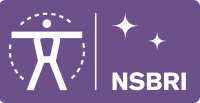Browse by Team or Program
Team Approach
NSBRI’s science and technology program aids NASA’s Human Research Program (HRP) by accelerating the transfer of findings from the laboratory to spaceflight and enabling new clinical applications. The product-oriented approach to research and development is leading to a number of operationally-relevant countermeasures and technologies ready for testing and evaluation aboard the International Space Station (ISS) and in medical settings.[/oxy_custom_text]

Space exploration missions can have deleterious effects on the cardiovascular system. Conversely, astronauts on long-duration missions who have pre-existing, but undetected, cardiovascular disease are at risk for…MORE[/oxy_custom_text]

Sharing the excitement and importance of space research and exploration is a primary goal of the NSBRI’s Career Development and Outreach Program. The Institute is fulfilling this goal…MORE[/oxy_custom_text]

Many factors can impact an astronaut’s ability to work well in space. The same can be said for the ground support crew’s efforts on Earth. The Human Factors and Performance Team is…MORE[/oxy_custom_text]

When working in space, astronauts lose bone and muscle from their legs, hips and lower backs due to reduced load-bearing. To put the bone loss in perspective, postmenopausal women who are untreated for bone loss can…MORE [/oxy_custom_text]

NEUROBEHAVIORAL AND PSYCHOSOCIAL FACTORS
Astronauts on long-duration space missions will endure the isolation and confinement of the space environment to a greater degree than previous space travelers and terrestrial explorers. Methods crews use…MORE[/oxy_custom_text]

Exploration-class missions will expose astronauts to various types of radiation. During missions beyond low Earth orbit (LEO), radiation exposures from bursts of solar radiation, called solar particle events, could impair…MORE[/oxy_custom_text]

Astronauts on long-duration space exploration missions will experience gravitational transitions, as well as extended periods of micro- and fractional gravity, with associated adaptation in their sensory and motor systems… MORE[/oxy_custom_text]

SMART MEDICAL SYSTEMS AND TECHNOLOGY
Since astronauts on long-duration missions will not be able to return quickly to Earth, new methods of remote medical diagnosis, monitoring and treatment are necessary. During long-duration…MORE[/oxy_custom_text]





